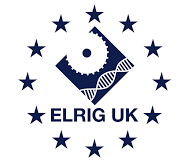This article and associated images are based on a poster originally authored by W. Strijker, I. Voskamp, B. Duggan, L. de Haan, W. Celus, and L. Gijzen and presented at ELRIG Drug Discovery 2025 in affiliation with MIMETAS BV and Montis Biosciences.
This poster is being hosted on this website in its raw form, without modifications. It has not undergone peer review but has been reviewed to meet AZoNetwork's editorial quality standards. The information contained is for informational purposes only and should not be considered validated by independent peer assessment.

Targeting the TME
The immunosuppressive tumor microenvironment (TME) has recently emerged as a novel therapeutic target. Improved preclinical tools offer enhanced mechanistic insights and support the development of targeted therapies.
We studied the role of perivascular macrophages (PVM) and a released target protein on immune cell migration in an organ-on-a-chip-based model. This setup allowed for the ranking of potential therapeutic antibodies.
Studying immune migration in the OrganoPlate®
The model used in this study features HUVEC (endothelium) in the top compartment, perfused with fluorescently labeled primary human immune cells, cultured under flow, and in direct contact with a collagen-I extracellular matrix gel. The collagen-I was enriched with primary macrophages or with the isolated target protein. Immune cell migration was quantified by fluorescent imaging.

A. The OrganoPlate 3-lane 64 platform with zoom-in on individual tissue chip. B, C. Representation of endothelial vessel, perfused with fluorescently labeled immune cells, aligning next to an extracellular matrix lane, comprising of embedded PVMs or target protein. Chip design allows for free migration of cells between lanes. Image Credit: Image courtesy of W. Strijker et al., in partnership with ELRIG (UK) Ltd.
PVMs create a suppressive environment
The addition of perivascular macrophages (PVMs) has been shown to have an inhibitory effect on immune cell migration, in contrast to pro-inflammatory M1 macrophages that increased the number of migrated immune cells.

Image Credit: Image courtesy of W. Strijker et al., in partnership with ELRIG (UK) Ltd.
Target-mediated immune migration
Increased concentration of target protein deposited in the extracellular matrix leads to reduced T cell migration. Effects are more profound with stimulated T cells. Cultures were pre-cultured with TNFα.

Image Credit: Image courtesy of W. Strijker et al., in partnership with ELRIG (UK) Ltd.
Antibody treatment
Novel therapeutic antibodies effects were assessed after target protein addition. Ab3 showed an increased migration of T cells.

Image Credit: Image courtesy of W. Strijker et al., in partnership with ELRIG (UK) Ltd.
PVM as a potential target
These findings highlight the potential of targeting PVMs and their released proteins. The study also shows the utility of this advanced in-vitro model for evaluating therapeutic antibodies in the context of an immunosuppressive microenvironment.
Reference
- Luuk de Haan, Suijker, J., et al. (2021). A Microfluidic 3D Endothelium-on-a-Chip Model to Study Transendothelial Migration of T Cells in Health and Disease. International Journal of Molecular Sciences, 22(15), pp.8234–8234. DOI: 10.3390/ijms22158234. https://pubmed.ncbi.nlm.nih.gov/34361000/.
About MIMETAS B.V.
MIMETAS B.V. develops organ-on-a-chip tissue models for evaluating drugs, chemicals and food components. Its unique microfluidic technology, designated OrganoPlates®, enables testing of compounds in high-throughput on miniaturized organ models. These models show better predictivity as compared to laboratory animals and conventional cell culture models.
About ELRIG (UK) Ltd.
The European Laboratory Research & Innovation Group (ELRIG) is a leading European not-for-profit organization that exists to provide outstanding scientific content to the life science community. The foundation of the organization is based on the use and application of automation, robotics and instrumentation in life science laboratories, but over time, we have evolved to respond to the needs of biopharma by developing scientific programs that focus on cutting-edge research areas that have the potential to revolutionize drug discovery.
Comprised of a global community of over 12,000 life science professionals, participating in our events, whether it be at one of our scientific conferences or one of our networking meetings, will enable any of our community to exchange information, within disciplines and across academic and biopharmaceutical organizations, on an open access basis, as all our events are free-of-charge to attend!
Our values
Our values are to always ensure the highest quality of content and that content will be made readily accessible to all, and that we will always be an inclusive organization, serving a diverse scientific network. In addition, ELRIG will always be a volunteer led organization, run by and for the life sciences community, on a not-for-profit basis.
Our purpose
ELRIG is a company whose purpose is to bring the life science and drug discovery communities together to learn, share, connect, innovate and collaborate, on an open access basis. We achieve this through the provision of world class conferences, networking events, webinars and digital content.
Sponsored Content Policy: News-Medical.net publishes articles and related content that may be derived from sources where we have existing commercial relationships, provided such content adds value to the core editorial ethos of News-Medical.Net which is to educate and inform site visitors interested in medical research, science, medical devices and treatments.
Last Updated: Nov 25, 2025